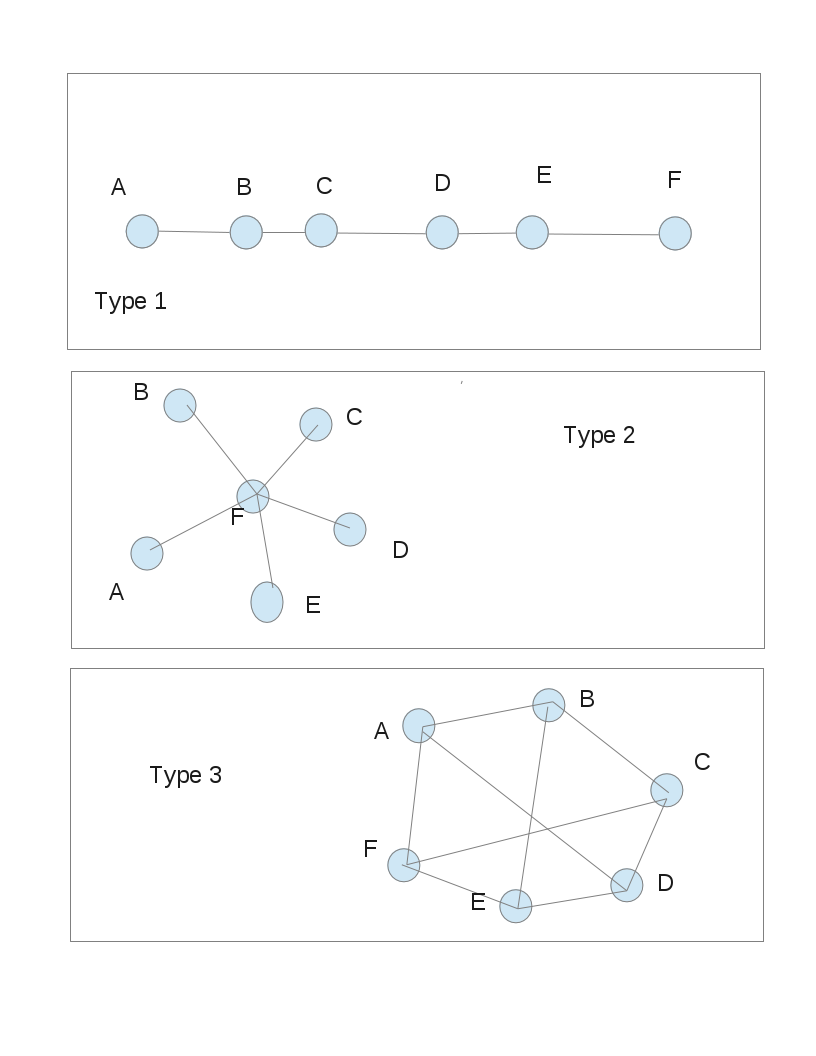Remove_replica_in_a_managed_topology#
Introduction#
In IPA 4.3 the replication topology is controlled by the topology plugin. Connections between replicas can only be created or removed by the
ipa topologysegment-[add|del]
commands.
When a replica is removed by running
ipa-replica-manage del
the removal of replication segments and corresponding replication agreements is automatically handled by the topology plugin.
But to be able to propagate these changes throughout the topology all the remaining servers need to be connected. You should be careful in the setup of a replication topology and in the actions to remove a replica. the following sections will make recommendations for designig a replication topology and how to procede when a replica has to be removed
Designing a replication topology#
The replication topology deployed should follow these rules:
Avoid single points of failure, the unavailability of one server or one connection between servers should not disconnect the remaining servers.
Avoid high replication traffic in one node.
This will be further explained for the following replication topology types:

Topo-types.png#
In Type 1 the replicas are connected in a string, any failing server will disconnect the others.
In Type 2 the replicas are connected in a star like pattern, if replica F is down all other replicas are disconnected, also replica F has to manage all replicaion distribution from other servers, replica A,B ,C,D, E will compete to update replica F, only one supplier can update a replica at one time
In type 3 there is a good balance, all replicas are connected to others vial different paths, also no replica has more than three replication connections to handle
Safely removing a replica#
Removing a “leaf” replica#
Assuming the following replication topology:
A <--> B <--> C <--> D
then the replicas at the endpoints of the replication chain, A or D, can safely be removed by:
ipa-replica-manage del A
The command removes the master entry for A and this will trigger that the topoloy plugin removes the segment connecting A and B an will remove the replication agreements A–>B and B–>A
Removing an “internal” replica#
Assume that in the above topology the internal node C should be removed.
If the command
ipa-replica-manage del C
is executed, the command will detect that the removal of C disconnects the topology and rejects the command.
It will also list the replicas which will be no longer connected to each other, use this information to add missing segments before finally deleting the replica
checking connectivity in topology suffix 'ipaca'
WARNING: Removal of 'vm-110.abc.idm.lab.eng.brq.redhat.com' will lead to disconnected topology in suffix 'ipaca'
Changes will not be replicated to all servers and data will become inconsistent.
You need to add segments to prevent disconnection of the topology.
Errors in topology after removal:
Topology does not allow server vm-072.abc.idm.lab.eng.brq.redhat.com to replicate with servers:
vm-192.abc.idm.lab.eng.brq.redhat.com
Topology does not allow server vm-192.abc.idm.lab.eng.brq.redhat.com to replicate with servers:
vm-072.abc.idm.lab.eng.brq.redhat.com
NOTE: the removal of an internal node can be enforced by adding --force to the command, but it should never be done
There are two cases
node C is working and properly handling replication traffic
Even if the node C is still operable and replicating its removal should not be enforced. The removal of C will trigger the removal of the connections to B and D, there can be race conditions where not all information on topology change is replicated to D before the agreement to D is removed.
And node D will be isolated after removal of C, so new segments will have to be added. Therefore the adding of the new segment should be done before the removal.
node C is inoperable and the topology is already broken.
In this scenario there is no chance that the removal of C will be propagated to D (if the removal is triggered on A or B) or to A,B (if the removal is triggered from D). But the removal information is kept in the changelog and will be sent after the topology is connected again by adding new segments. Depending what other toplogy changes have been done in between there could be race conditions where the late replication of the removal could give unexpeted results.
As a conclusion, in both cases the topology should be extended first to keep the topology connected, by running
ipa topologysegment-add --leftnode=A --rightnode=D
This ensures that the toplogy is fully connected again and keeps connected after C is removed
